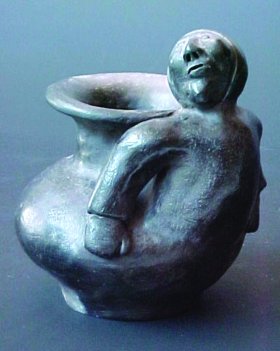Vestnorden Arts & Crafts 2004
Participating countries: |
|||






Nunavut

Nunavut, which means "our country" in the Inuit language, is the north eastern coast of Canada and the islands to the east of it. It covers a fifth of Canada and is the largest region that belongs to the natives. The traditional Inuit craftsmanship developed from the need to survive in harsh nature with few raw materials. The Inuit learned how to carve soapstone and caribou antler to fabricate tools for hunting and day-to-day living. In the old days tools like the ulu knife, kudlik lamp, spear and arrow heads and other useful items were carved from stone. Today soapstone carving has evolved into an art form, and Nunavut has many talented artisans. Nowadays the tools of the carvers are modern but the style is traditional, in some regions abstract in others realistic.
The rich carving tradition has laid the foundation for another trade, that of printmaking. At first the printing plates were carved out of soft stone but now wood is also used, etchings and more modern methods. The making of skin clothing, dolls, baskets and weaving are traditionakl handicrafts in Nunavut and the making of jewelry is in rapid developement. At the exhibition the items from Nunavt were prints, jewelry made of silver, copper, gold, whale teeth and emeralds, clothing of sealskins and rabbit and fox furs, carvings from soap stone and ceramics.
Participants: |
|||
| Jolly Attagutsiaq | Prints | ||
| Pierre Aupilarjuk | Ceramics | ||
| Thomasie Etuangat | Jewelry | ||
| Kululak Ituluk | Stone sculptures | ||
| Matthew Nuqingaq | Jewelry | ||
| Aaju Peter | Sealskins | ||

